I am running a workshop where one of the tasks of the participants is to formulate a statement around their Vision. I wanted to reach out to the Miro Community to see how others are doing it.
This is a simplified summary of my approach:
1. I ask them to fill out a survey where they each are to describe their Vision.
2. I invite them to the board where they get 3 dot-votes to vote on the contributions they think are the best (if it is a 10 people team, there will be 10 formulated Vision Statements to vote on).
3. I ask them to look at the results from the vote, and describe the Vision with 1 word only. This creates 10 words which all are probably very important to the Vision.
4. Filled with insights (hopefully) from the vote and the 10 words, I ask them to come up with an updated version of the Vision Statement using the 1-2-4-All tecnhique.
I feel that this creates a lot of engagement during the process, but sometimes people are not ending up with a conclusion they hoped for / feel content with the end result.
I also try to avoid that the process relies too much on discussion since this creates a lot of biases (HIPPO syndrome) but I experience that the discussions are valeuable, so I have a bit of a hard time balancing.
Have you experience of similar exercises where the task is to get distributed team to reach a consensus around a specific formulation? How do you approach it?
How to form a Vision Statement using Miro
A slightly different approach I’ve used for vision statement development in the past is to get one key stakeholder to create the sentence, then have the next person edit it, and then the next and so on until everyone has had a chance to tweak it to fit their vision for the product, project or service.
Your approach will work well, the only concern I’d have is you might end up with an “everything and the kitchen sink” vision statement which could have a lot of “management speak” in it.
The most important thing is for everyone to be looking at the statement as it is being developed to overcome the issue Jeff Patton raised in User Story Mapping:
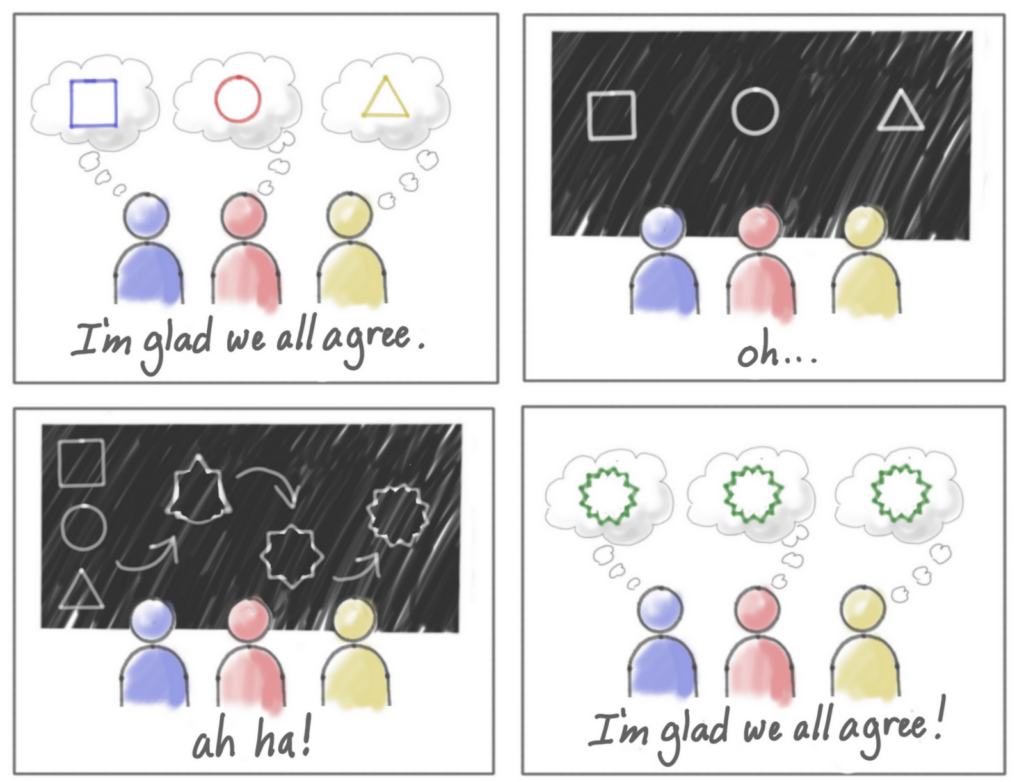
Kiron
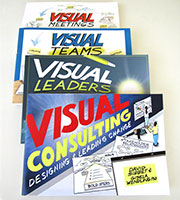
Their methodology is well organized and its blashphemy for me to excerpt a portion only but here goes:
One step before a vision statement is an exercise in shared values and they like to use a circular mandala… when I took a training with them this was done with people seated around a circular table..
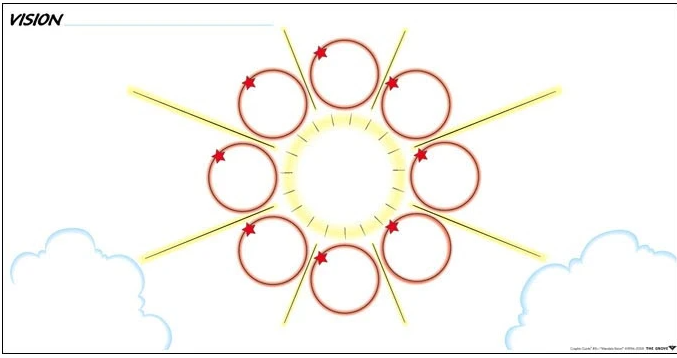
This is useful when sitting around a table because all people have direct access to their contribution arch/pie wedge, through geometry it signals democracy, it assuages any subconscious perception or anticipation of hierarchy / destructive polarity, and similarly orients people geometrically towards a common center. These form-signals-function type things are subtle but I’ve found them invaluable considerations in visual facilitation- especially in the more soft, nebulous, personal, emotional and spiritual of meetings - such that ‘vision’ statement meetings are.
Its not quiet the same in virtual Miro space. For one, no one is surrounding a circular table. But could they be?? Are there ways to engender a similar feeling of ‘aiming’ at a common shared vision? A dissolution of hierarchy? Either naming the archs of this circle with teams or people… or a confluence of a river or roots of tree...
… anyway, this all just to say that setting up the architecture of the playing field will consciously and subconsciously affect the way each plays the game.
While Grove will sometimes draw landscape pictures to create a vision statement murals and orient teams toward a process…
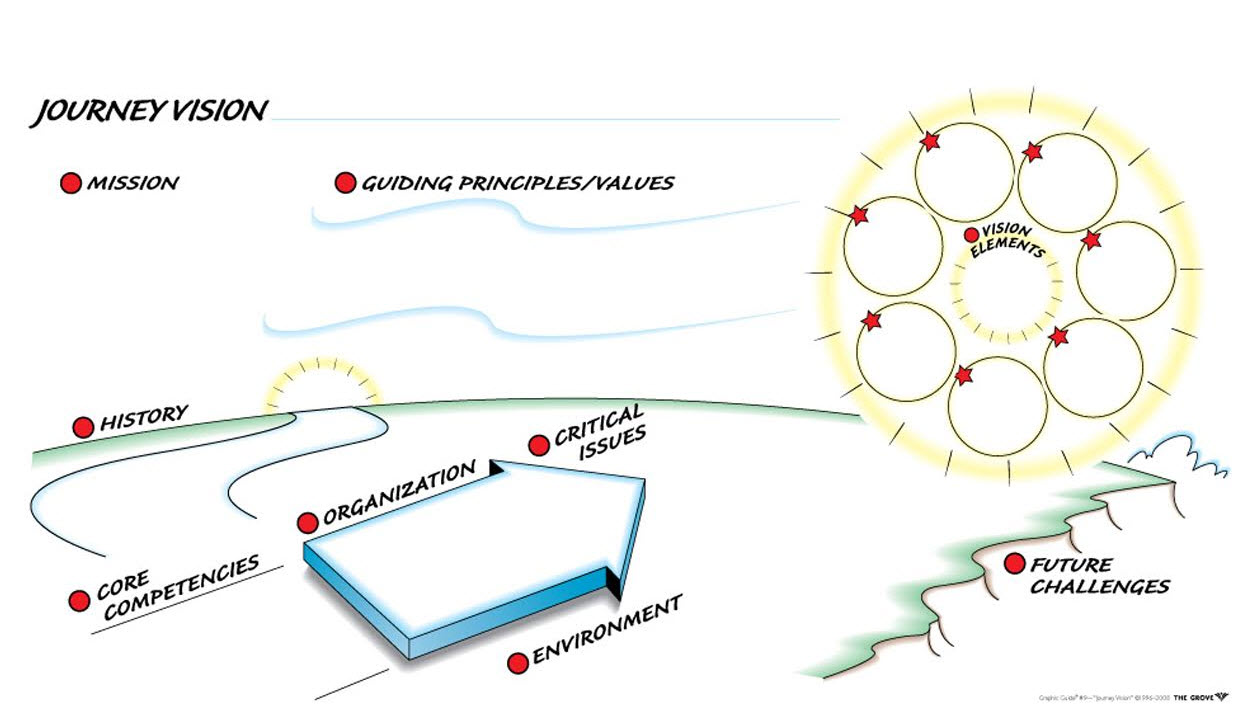
I’ve been wondering about the use of backgrounds on Miro boards of landscapes that evoke vision and change and motion. Example:
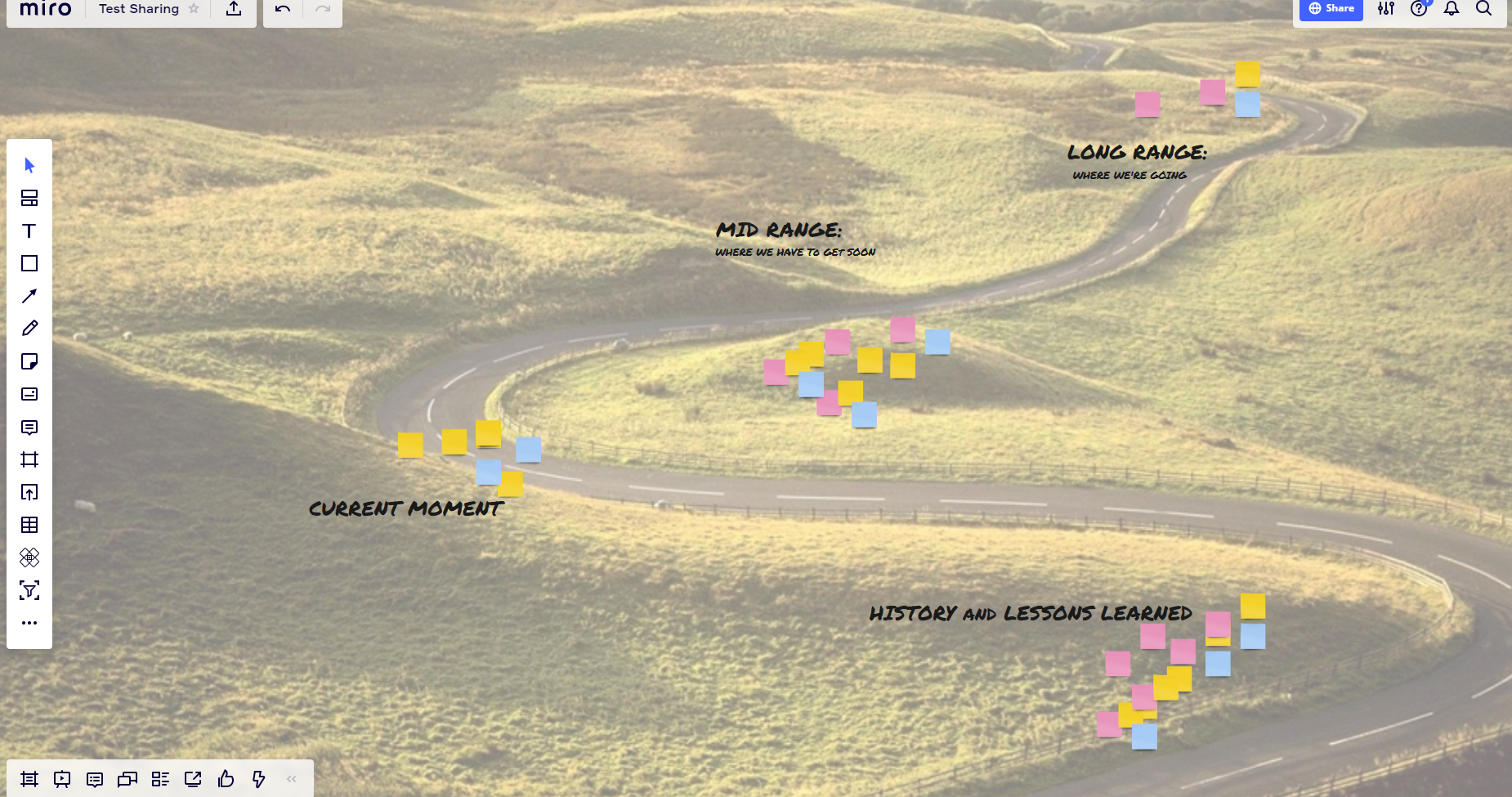
I don’t feel like teams need these metaphors persistently … but early on, when “buy-in” into a new ‘process’ of visioning, planning or change is critical, having the metaphors is helpful all-team orientation.
Just some thoughts. Good luck!
I love that idea of using background images as a way to get folks in the right mindset early on in a workshop!
Kiron
Hey
I’m not 100% sure if it applies but we have seen other use cases where you draw a circle on the board and use profile pictures to create a virtual table. In the example I’m thinking of, it was for a daily standup where they passed an image of a beach ball to signal who had the floor.
I think it’s a really fun example and maybe it can apply to your vision statement methodology!
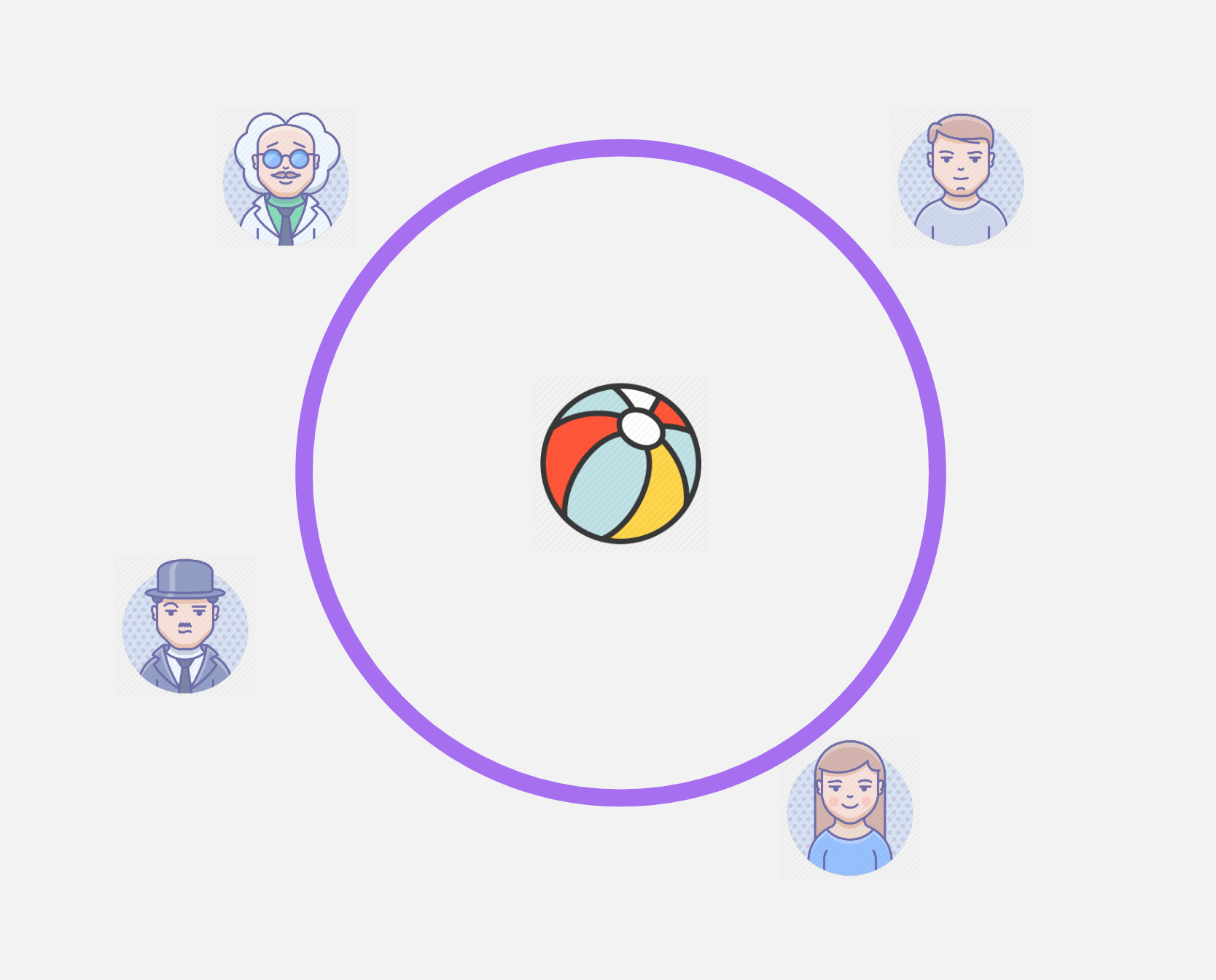
Kind regards,
Matt
I love that beach ball idea as it could be applied to figure out the “who goes next” for almost any type of facilitated discussion!
Kiron
Great to read all the awesome examples, feels encouraging that
I already got a new idea on how to imrpove the values chapter in my workshop, will come back and share it soon
Thanks guys, hope this thread grows, since there is so much good experience out there.
One thing I’ve implemented lately is that I have added a last step in the Vision Statement exercise - where the statements has been set, but many might feel a “everything and the kitchen sink” kind of feel is that each participant is to add at least 3 notes of though on the statement. I put the statement in the center of a 4-square, and the 4 squares are labelled Insights, Motivation, Questions and Improvements. So the exercise leaves the outcome with some additional thoughts.
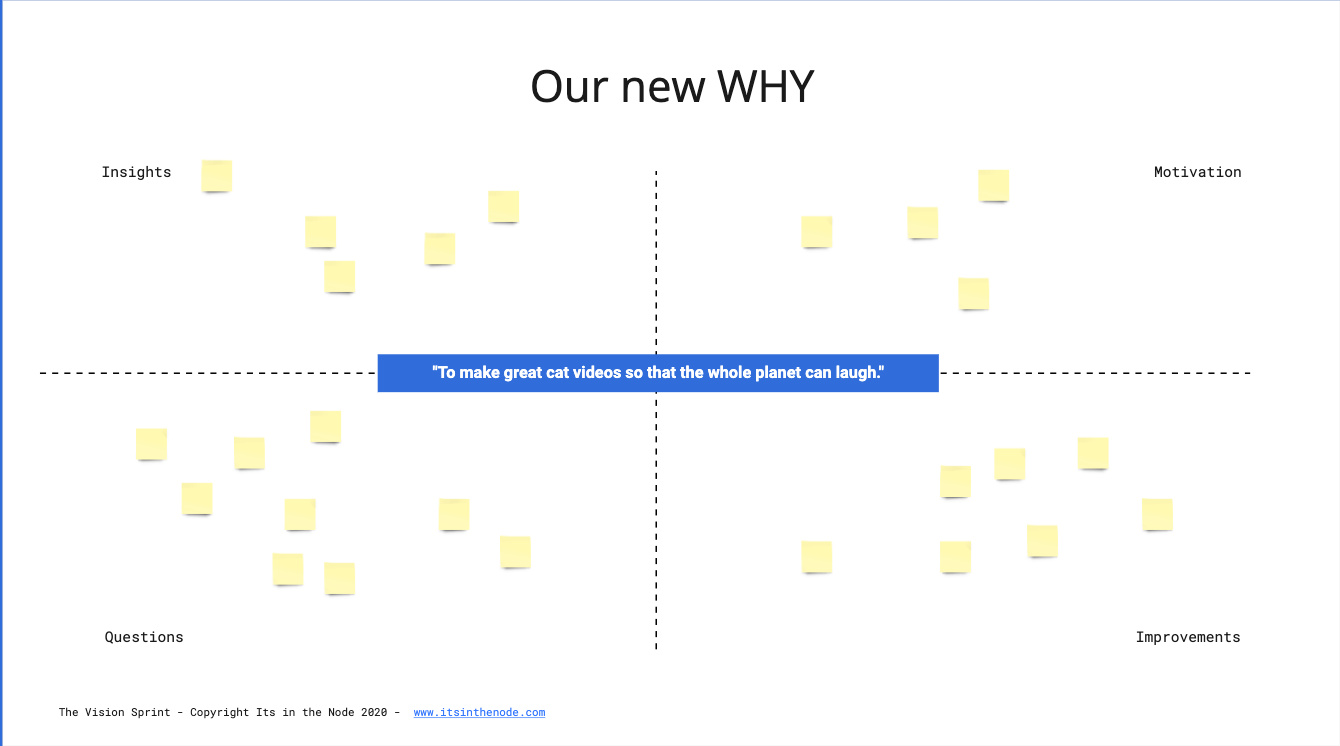
The second thing I’ve done is to assign a Lead, which is accountable to go through all data in each chapter (we have 4 chapters in the workshop) and between the chapters analyse and summarise. This work is then presented in the beginning of the next exercise.
Great idea - this is almost starting to look like a Product Canvas (a la Roman Pichler: https://www.romanpichler.com/tools/the-product-canvas/)
Kiron
There’s an activity I’ve run many times in person called the Four Word Story, developed by James Buckhouse. The activity generates great energy, and really forces people to focus on the core things that matter.
An excerpt from James’ Medium article…
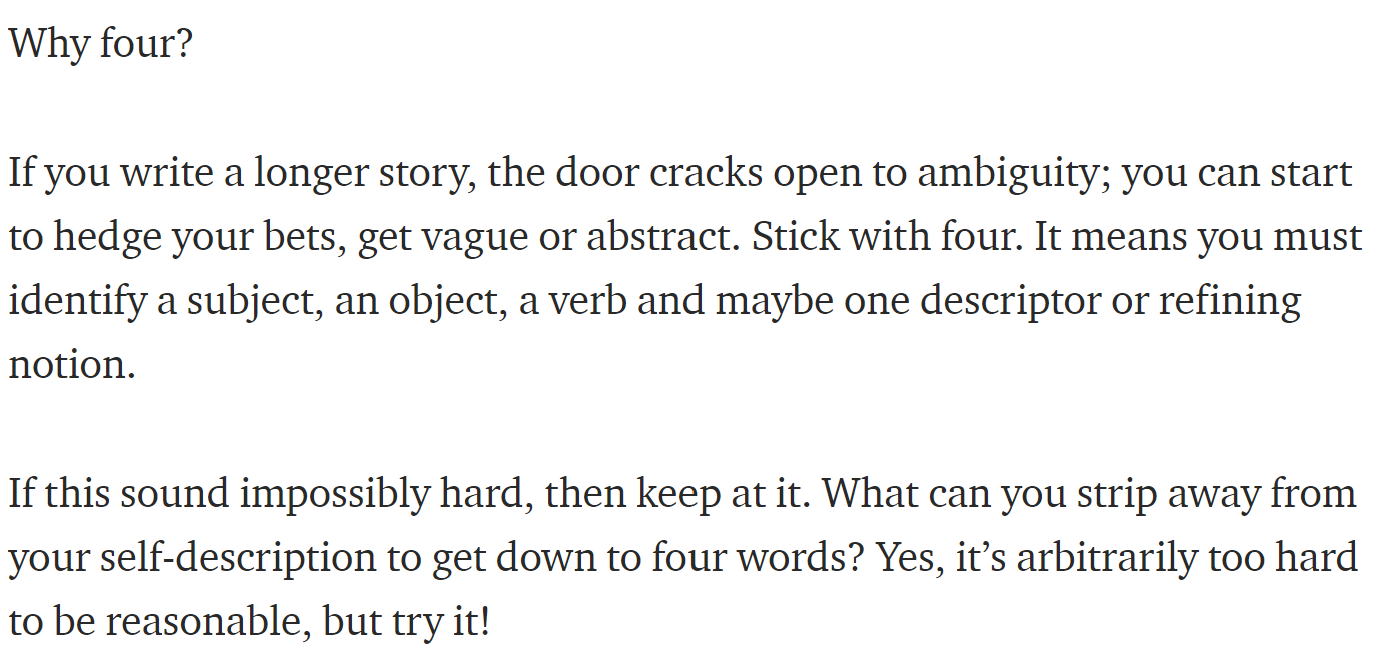
I think it could translate well into Miro. All it requires is a burst of individual brainstorming, a dash of affinity mapping and, depending on group size, hash it out together or breakout into groups around the same or different collections of values.
If you have multiple teams working on this, you could come back together and synthesise into one. I’m not a fan of voting as this can make the non-winners feel their efforts were a waste of time, particularly if they fell in love with their own statement. So facilitate groups around a process of collaborative decision making.
Was great to read all the other good ideas from this thread - I have some new things to try out! And I’m inspired now to see if I can template the Four Word Story and share it on Miroverse (maybe I should check first to see if someone’s beat me to it  )
)
Andrea
Reply
Enter your username or e-mail address. We'll send you an e-mail with instructions to reset your password.





